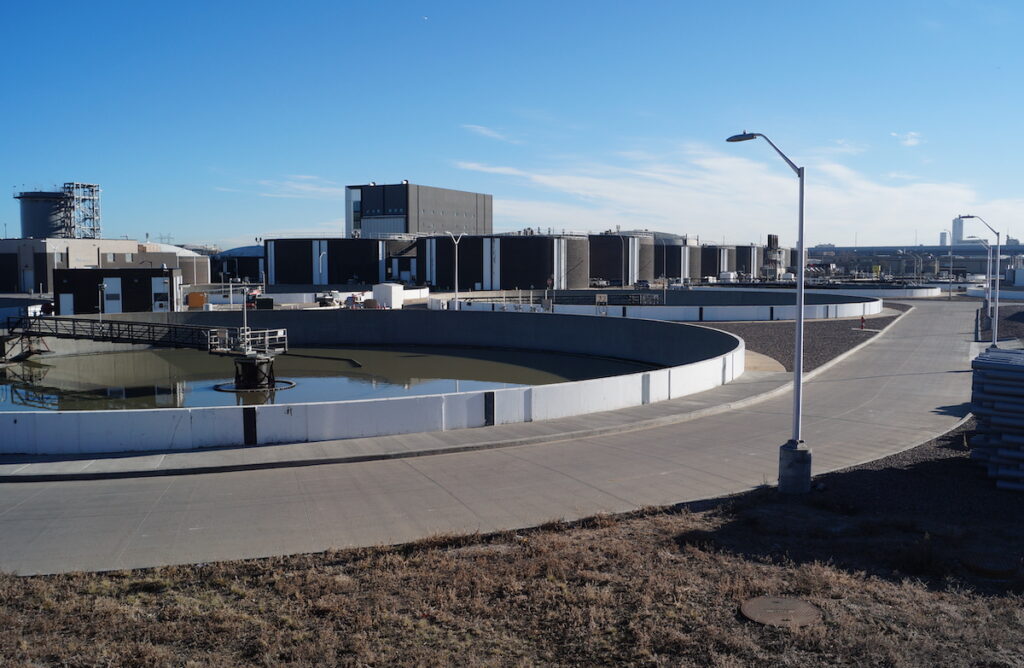By Trish Zornio

For years Suncor Energy has dominated local news about air pollution. But what else is causing air pollution in Commerce City?
Based on data from an independent air monitoring study presented by Cultivando last year, hydrogen sulfide could be a significant concern for the region. For those not familiar, hydrogen sulfide is the rotten-egg smell that makes your nose wrinkle when it wafts by. It also causes health impacts such as headaches, sore throats and difficulties breathing. But where the excess toxin is coming from hasn’t been fully settled. According to one lead scientist, Suncor probably isn’t the only source.
“Hydrogen sulfide is a really interesting and unique airborne contaminant,” explained Detlev Helmig, who led the independent air monitoring study in Commerce City. “For most of these gases, it takes complicated and highly sensitive monitors to track the concentration levels. Hydrogen sulfide is different though, because it is a strongly odorous gas. So, people can smell its presence in the air. In our one-year monitoring program, we recorded it above the odor threshold 7,557 times in Commerce City compared to zero times in Broomfield, where we ran exactly the same type of monitor during the same time period.”
The odor threshold, according to Helmig’s presentation last year, is defined as greater than eight parts per billion in 2022, and Helmig explained how his team was able to identify multiple sources of hydrogen sulfide after accounting for air transport. One prime suspect? It comes “straight from the direction of the water treatment plant.”
The facility referenced is Metro Water Recovery (Metro), but Helmig’s data has presented a conundrum for state monitoring agencies that haven’t been able to confirm similar elevated levels of hydrogen sulfide at the wastewater facility. For its part, Metro Water Recovery acknowledges hydrogen sulfide is an emission during the wastewater treatment process, but it’s adamant the facility is in full compliance with air permits and emphatically denies exceedances of hydrogen sulfide.

“Every day, Metro Water Recovery treats an average of 138 million gallons of wastewater from homes and businesses,” read a statement from a spokesperson at Metro, adding, “Human wastes contain sulfur. Hydrogen sulfide is produced when the organisms in the wastewater treatment process are breaking down the sulfur that is present in the wastewater. Metro controls the hydrogen sulfide levels that are generated by adding an iron-based chemical to the anaerobic digestion part of the treatment process.
“Metro has not had any exceedances of H2S from any facilities and is 100% compliant with the air permit requirements… The permit has a 3-hour rolling average of 1,680 ppm. The facility has not had an exceedance of that limit. The monitoring is completed on the gas stream prior to combustion at the facility.”
A spokesperson for the Colorado Department of Public Health and Environment Air Pollution Control Division supported Metro’s claim.
“The Air Pollution Control Division provides regular oversight and completes a comprehensive annual inspection of Metro Water Recovery & ENGIE each year,” read a statement to the G.E.S. Gazette. “Examples of some previous, minor air violations, include late report submittals, late Air Pollutant Emission Notice submittals, use of temporary rather than permanent signage, and failing to report all deviations. The APCD has not identified any violations regarding hydrogen sulfide as related to Metro Water facilities.”
The G.E.S. Gazette has previously reported on concerns regarding differences in air pollution monitoring between state requirements and independent teams, and whether such differences suggest the state process may not be rigorous enough in their requirements.
For example, the independent air monitoring team that was contracted by Cultivando for Suncor Energy often found substantially higher and more frequent air pollutant rates than did the state-regulated air monitoring programs at the oil and gas refinery. Differences in these results have been explained by the independent team as due to monitoring at multiple locations, monitoring continuously and using more sensitive instruments and data analysis.
Currently, it’s unknown if similar methodological differences might explain the discrepancies in recent findings for hydrogen sulfide levels, in part due to a lack of direct study and comparison between Metro’s monitoring and the study completed by the independent team. In an emailed statement, a spokesperson for the EPA claimed they’ve requested but have been denied access to the raw data collected under Cultivando to review for themselves.
“We understand Cultivando collected air quality data near Suncor’s facilities in 2022-2023 and presented their findings last March. EPA has requested the complete data files from Cultivando’s air quality sampling multiple times, so we may conduct a comprehensive evaluation, but have yet to receive this information.
“However, EPA continues to look for opportunities to support Cultivando and community members as they seek to develop information about air quality conditions in Commerce City, Elyria-Swansea and Globeville. Currently, there are funding opportunities available to North Denver communities through the Inflation Reduction Act, which will be the subject of upcoming outreach and community meetings.”
The new funding announcement comes after Cultivando elected to drop a previously awarded EPA grant for air monitoring last year after frustrations over the granting process. The grant money was unable to be passed on to another organization at that point, and was returned to the general fund.
Additional funds have also been secured by CDPHE to in part address elevated hydrogen sulfide levels among other pollutants. In February, the state agency announced a $10.5 million enforcement package against the Commerce City oil and gas refinery for multiple violations between July 2019 and June 2021. The fines will go toward a combination of penalties and improvement projects and are directly related to breaches by the Suncor facility only.

Be the first to comment